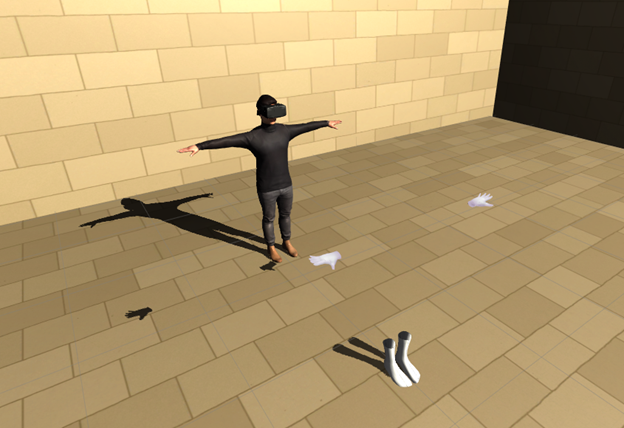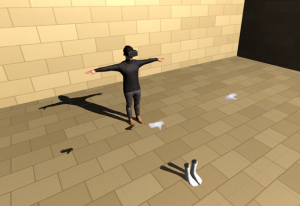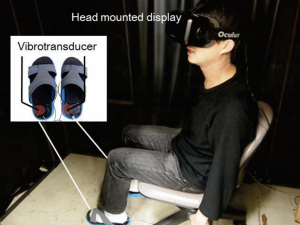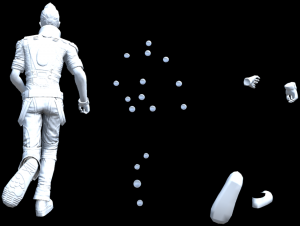
- ARAB NEWS
- 14 Jul 2025

Nader Sammouri
OSAKA: People view the world, not as the world is, but as their mind is molded, seeing surroundings not with their eyes but with their minds.
What distinguishes virtual reality from reality is that it visualizes a similar kind of personalized perception and intensifies it with unlimited space. In virtual reality or VR, there is infinite space consciousness where people are able to develop into borderless beings that can float, fly and ascend. Instead of managing their lives with a tiny 2D screen that is currently said to be smart, a virtual world allows people to step into the screen and experience an extended “social life” in 3D.
People, in reality, are very object-conscious because laws of nature impose restrictions upon them. Weather, gravity, and other laws of physics and natural dynamics crystallize an uncontrollable objective reality. However, virtual worlds are man-made and code-constructed, so the laws of nature and monetary confines are eliminated. Thus, the possibilities of experiences through form become endless.
The image of people glued to bulky headsets may seem outrageous at first. However, computers, smartphones, cars, and other inventions that we now take for granted seemed absurd as well when they got introduced.
Aside from the disadvantages of VR, realized and unrealized, the technology carries many benefits. The gaming industry bred $155 billion in revenue in 2020. What is so appealing about games?
People love to play games and are more than willing to undergo the risks and erratic challenges it proposes. One reason is that it guarantees a replay option, making it easier to have courage and confidence. There are no consequences in playing a game, and loss aversion bias is eliminated because people can avoid the element of risk. Virtual reality is an alternate universe that guarantees that as well. Therefore, it almost poses as a gamified version of life.
Many questions surround the progressing human ability that is slowly attaining vast amounts of knowledge and soon unlimited access to space through VR. The information clutter may appear to be stressful at times. However, what happens when the ingredient of space is added. Are people ready to handle the vast amount of information and space altogether? And in such a world, is the human body even important?
“I think a sense of a body, even in a virtual environment, is important to perceive our world and our specific location in it. For example, I am here so my body can feel it. Also, I can see it through my eyes and interact with my environment. I think a sense of body ownership is important in a virtual environment,” said Ryota Kondo, a Postdoctoral researcher at Keio University who specializes in VR and human-body perception.
Kondo, in his research and experiments, asks a crucial question: Is consciousness body-dependent? He investigates body ownership and discovers that two hands and two feet in a virtual space could be enough for a person to perceive body ownership.

Takeo Hamada is another VR researcher, a lecturer at Tokyo University, and a researcher of human-computer interaction. One of Takeo’s experiments was a virtual walking generator, which presents the sensation of walking in a geographically distant place.
Through his VR display, he was able to detect motion images coming from a mobile robot on wheels attached to an omnidirectional video camera and view what the robot was viewing. The haptic slippers were supposed to provoke the feet sensations that one feels in reality, thus tricking the brain through touch in addition to sight, to think that it is walking although it is not.
“We generated a vertical shaking motion on the VR display to mimic the head-shaking during the act of walking. As for the tactile sensations on the feet, four vibrators were attached to the slippers to mimic the vibration that toes and heels feel as it contacts the ground,” Hamada said.

Hamada organized another experiment to prove that running behind a virtual jogger boosts one’s motivation more than solo-running. The runner wears smart glasses that augment the hands and feet of a virtual being running in front of him.
“The virtual jogger experiment aimed to apply the phenomenon of social facilitation, widely known in social psychology, where one is influenced by the presence and movements of others,” he said.

“In order not to obscure the jogger’s field of view, we used three types of body visibilities for the virtual runner: full-body, point-light, and limb-only, and compared the following experiences: jogging with the virtual runner, jogging with a real person, and jogging alone. As a result, we observed that people tended to be more motivated when they jogged with a virtual runner than when they jogged alone, although not as much as when they jogged with a human runner,” Hamada said.
The Metaverse is an ambitious promise made by Facebook’s CEO Mark Zuckerberg to rebrand the popular platform into a universe that develops virtual connections, extends real life, and creates new interactive digital playgrounds, shared social spaces. It uses 3D avatars representing users, which could be tomorrow’s “profile pictures.” Instead of static images, avatars are 3D representations of every person. With an Oculus Quest 2 virtual reality headset, one may be able to step into the Metaverse and experience a 3D-like Facebook experience embodied with an avatar of their choice.
There are many missing elements in today’s remote working environments, and perhaps a replication of real social presence in a 3D virtual space is a step closer to mimicking reality. Metaverse could open new doors of opportunity for gaming, work, and social networking like virtual social lobbies for live events. It is an immersive approach to be “in” the experience rather than viewing it from a screen.
Virtual teleportation is the new “internet link.” In an instant, one can teleport to another virtual space and immerse themselves in a different environment with different avatars. People get to choose where to be and how to look like, a new form of power.
The virtual reality market of the MENA region is gradually increasing and is expected to continue its adoption climb, especially in the emirates, KSA, and Egypt. Dubai currently has the world’s largest VR park that includes a VR roller coaster spanning 7000 square meters at Dubai mall.
New developments always pose new challenges and unexpected consequences.
Will there be a need for a virtual government? Virtual police? Virtual wars for attaining power and control?
Many of the things people physically hold dear today are losing meaning to digital alternatives. With that dependency, virtual worlds are slowly becoming more relevant. What’s more? Concerning virtual money, the gradual formation of cryptocurrencies can be utilized as a VR currency. As for virtual ownership, NFTs are on-the-rise digital assets that offer unique proprietorship of digital items with public proof of ownership.
Are we on the verge of an intentionally fashioned game of life, a Life 2.0?